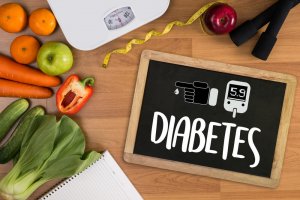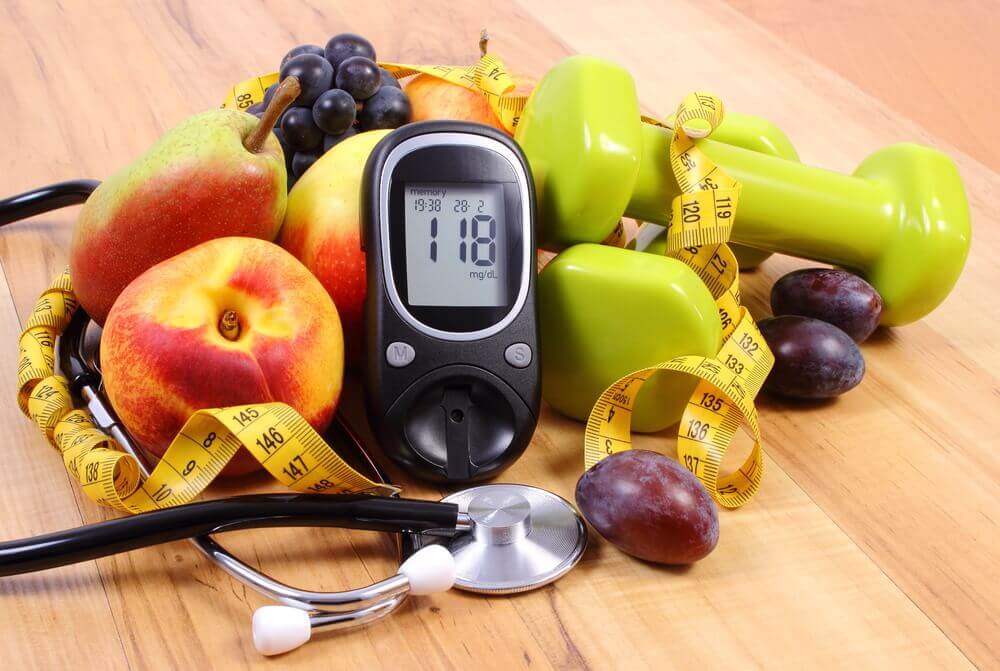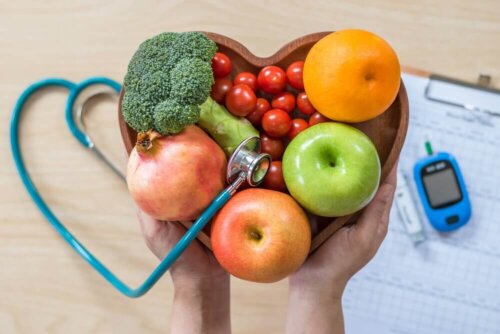A Healthy Slimming Diet for People with Diabetes


Written and verified by the pedagogue in physical education and nutritionist Elisa Morales Lupayante
People with diabetes must pay close attention to their diet. With this in mind, we’ve developed a wholesome well-balanced weight-loss diet plan for each meal of every day of the week.
It’ll help lower the risk of altering the blood sugar levels.
Be clear in that each person has different nutritional needs when it comes to weight loss diets. Moreover, people with diabetes are no exception and any given diet must be tailored to their needs.
Keys to a healthy diet
First of all, a healthy diet is one that reduces the risk of illnesses whilst still getting the necessary nutrients for the body to work properly.
This is why a healthy diet should include a wide variety of foods, such as, vegetables, whole grains, fruit, fat-free dairy products, lean meats, and white and oily fish.

Therefore, the goal of a healthy diet is to include foods from all food groups in their correct proportions throughout the day.
Furthermore, be sure to choose quality foods. In other words, choose those foods that are rich in vitamins, minerals, and fiber and stay away from ultra processed industrial food.
For the most part, a person with diabetes can eat the same things as the rest of the family. However, they need some planning to control their glucose levels and safely lose weight safely.
A weight-loss diet for diabetics

Dieting with a careful selection of food and physical activity are a must for people with diabetes. Furthermore, they must do it under medical supervision.
Thus, overweight people with diabetes must lose pounds with a special diet as excess weight is a risk factor for hypertension and cardiovascular problems.
Not only that, extra weight can complicate the management of the glucose curve in addition to increasing insulin resistance, according to an article published in the journal Current Opinion in Endocrinology, Diabetes and Obesity.
Read about Athletes With Diabetes: What You Should Be Eating
A slimming menu for people with diabetes
Below you’ll find different options to combine in each of the six meal intakes of the day.
However, keep in mind that these are only examples of meals you can have if you have this disease. This is because one of the most common mistakes when it comes to dieting is to restrict fat intake.
People with diabetes need to adjust their caloric balance but the lipid requirements are essential. Otherwise, they could end up with a harmful vitamin D deficiency, as stated in a study conducted in 2019.
Thus, don’t limit yourself only to these suggestions, remember you can vary it with other foods suitable for diabetics. Take note!
Breakfast
- Coffee with skimmed milk
- Red or green tea
- Cereals without added sugars or “chocolate”
- Two slices of toasted wholemeal bread with sugar-free jam
Mid-morning snack
- A piece of fruit
- A low-fat yoghurt
- A sugar-free cereal bar
- Two slices of toasted wholemeal bread with turkey meat or cheese
Lunch
- Pasta salad with tomato, lettuce, corn, chicken, egg (without the yolk), and green leaves. It’s important not to add mayonnaise. Try other options like olive oil, yogurt dressing, or soy sauce.
- Mediterranean salad
- Tomatoes with oregano and cheese
- Lentils and vegetables
- Spinach and chickpeas
- Peppers or eggplant stuffed with chopped chicken
- An infusion-based dessert, or a coffee with skimmed milk

Afternoon snack
- Milk, with coffee or by itself
- Lemon or grapefruit juice
- Red or green tea
- Four biscuits, sugar-free
- Homemade pudding or low-fat yogurt
- Homemade biscuits with yogurt, grated lemon, and whole flour
Dinner
- Salad with tomato, lettuce, boiled eggs (without the yolk), onion, and tuna
- Roasted vegetables
- Coleslaw
- Boiled or raw green vegetables
- Scrambled garlic eggs with prawns
- Grilled sole
- Grilled chicken breast
- Beef, grilled as well
- An infusion-based dessert
Before bed
- A yogurt
- A glass of milk
People with diabetes need a combination of the proper diet and exercise to lose weight
You need to follow this kind of diet along with an plan for mild physical activity. Thus, going for long walks, brisk 30-minute walks, or dancing can help you lose weight quicker and burn the sugar in your blood.
Be wary of low blood sugar levels or hypoglycemia if you use insulin.
Finally, pay attention to the carbs you select for your diet as these can raise your blood sugar faster than other types of foods.
All cited sources were thoroughly reviewed by our team to ensure their quality, reliability, currency, and validity. The bibliography of this article was considered reliable and of academic or scientific accuracy.
- Polsky S., Ellis SL., Obesity, insulin resistance, and type 1 diabetes mellitus. Curr Opin Endocrinol Diabetes Obes, 2015. 22(4): 277-82.
- Zitterman A., Pilz S., Vitamin D and cardiovascular disease: an update. Anticancer Res, 2019. 39 (9): 4627-4635.
This text is provided for informational purposes only and does not replace consultation with a professional. If in doubt, consult your specialist.








